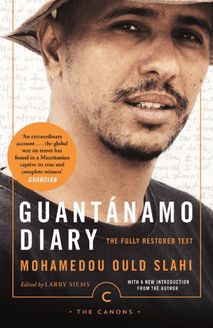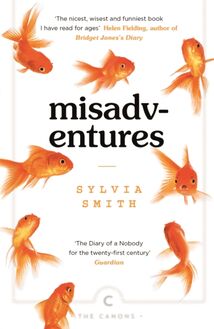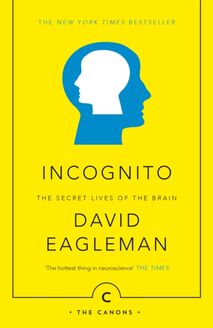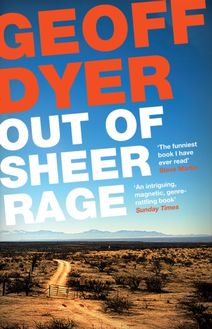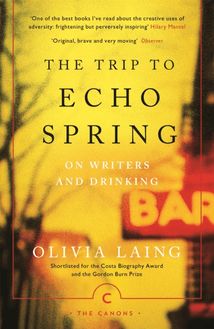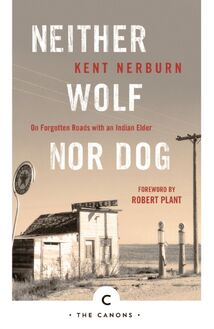-
 Univers
Univers
-
 Ebooks
Ebooks
-
 Livres audio
Livres audio
-
 Presse
Presse
-
 Podcasts
Podcasts
-
 BD
BD
-
 Documents
Documents
-
- Cours
- Révisions
- Ressources pédagogiques
- Sciences de l’éducation
- Manuels scolaires
- Langues
- Travaux de classe
- Annales de BEP
- Etudes supérieures
- Maternelle et primaire
- Fiches de lecture
- Orientation scolaire
- Méthodologie
- Corrigés de devoir
- Annales d’examens et concours
- Annales du bac
- Annales du brevet
- Rapports de stage
La lecture à portée de main
Vous pourrez modifier la taille du texte de cet ouvrage
Découvre YouScribe en t'inscrivant gratuitement
Je m'inscrisDécouvre YouScribe en t'inscrivant gratuitement
Je m'inscrisEn savoir plus
Vous pourrez modifier la taille du texte de cet ouvrage
En savoir plus

Description
Sujets
Informations
| Publié par | Canongate Books |
| Date de parution | 05 février 2015 |
| Nombre de lectures | 0 |
| EAN13 | 9781782115021 |
| Langue | English |
| Poids de l'ouvrage | 4 Mo |
Informations légales : prix de location à la page 0,0400€. Cette information est donnée uniquement à titre indicatif conformément à la législation en vigueur.
Extrait
ALSO BY JOHN BERGER
To the Wedding Into Their Labours (Pig Earth, Once in Europa, Lilac and Flag: A Trilogy) A Painter of Our Time Permanent Red The Foot of Clive Corker’s Freedom Art and Revolution The Moment of Cubism and Other Essays The Look of Things: Selected Essays and Articles Ways of Seeing Another Way of Telling A Seventh Man G. About Looking And Our Faces, My Heart, Brief as Photos Keeping a Rendezvous
A Fortunate Man
The Story of a Country Doctor
John Berger Jean Mohr
Introduction by Gavin Francis
Published in Great Britain in 2015 by Canongate Books Ltd, 14 High Street, Edinburgh EH1 1TE
First published in Great Britain in 1967 by Allen Lane, The Penguin Press, Vigo Street, London W1
www.canongate.tv
This digital edition first published in 2014 by Canongate Books
Copyright © 1967 by John Berger Copyright renewed 1995 by John Berger Photographs copyright © 1967 by Jean Mohr Photographs copyright renewed 1995 by Jean Mohr Afterword copyright © John Berger, 1999 Introduction copyright © Gavin Francis, 2015
The moral right of the author has been asserted
British Library Cataloguing-in-Publication Data A catalogue record for this book is available on request from the British Library
ISBN 978 1 78211 501 4 eISBN 978 17 8211 502 1
Typeset in Goudy 11/15 pt by Palimpsest Book Production Ltd, Falkirk, Stirlingshire
This book is dedicated to John and Betty whom it concerns, and to Philip O’Connor for the letters he wrote to me whilst I was writing it. J.B.
Contents
Introduction
A Fortunate Man
Afterword
Introduction
A Fortunate Man is a masterpiece of witness: a moving meditation on humanity, society, and the value of healing. First published in 1967 it remains strikingly original, blending John Berger’s text with Jean Mohr’s photographs in a series of superb reflections on the doctor’s role, the roots of cultural and intellectual deprivation, and the motivations that drive medical practice. The subject of the book, John ‘Sassall’, emerges as an individual deeply committed to inner reflection as well as to his vocation as a physician. When I was working as a newly qualified doctor it became my habit to give copies as gifts. For years it’s been out of print and increasingly scarce; the habit was becoming expensive.
When asked how to approach his own work, Berger has often replied, ‘I’m a story-teller.’ ‘Even when I was writing on art,’ he said in 1984, ‘it was really a way of story-telling – story-tellers lose their identity and are open to the lives of other people.’ * When I went to meet Berger, to ask him how he and Mohr came to create A Fortunate Man, he began by telling me a story.
It started in London, in the early 1950s, when Berger was a commentator on art for the New Statesman . His essays and reviews were unconventional as well as controversial; he had to fight to keep his job. ‘We received a marvellous essay from an Indian writer called Victor Anant,’ he told me, ‘called “An English Christmas”. On the back of the envelope was the return address: “Left Luggage Office, Paddington Station”. I jumped on my motorbike and drove over to meet him. He’d not long arrived from Bombay, and this was the first job he’d found.’
Anant, like Berger, distrusted established power; in India he had been imprisoned by the Raj. The two men became friends and, several years later when Berger was living in rural Gloucestershire, Anant and his Pakistani wife were drawn to live nearby. Sassall was the single-handed general practitioner who attended the two men at that time.
‘I became friends with Sassall after going to him with some minor medical problem,’ Berger explained. ‘He cured me, and we became friends. I used to meet regularly with him and with Anant to play bridge.’ The two writers recognised in Sassall an outstanding physician as well as the enthusiast of an unfashionable ideal – the Renaissance dream of aspiring to universal knowledge and experience. As a doctor who sought daily to empathise with others, though they be of very different backgrounds and perspectives, they perceived that Sassall came closer to attaining this ideal than most men or women ever could.
By the mid 1960s Berger had moved to Geneva, but both he and Anant were still in touch with Sassall. One day, Anant suggested that Berger write a book about their friend, his medical practice, and his determined pursuit of the universal. Berger again: ‘“You know, this man is really remarkable,” Anant told me, “but one day no one will know of him. His goodness will have consequences, of course, but unless you write about him, the specifics of his life and his attitude may not be preserved.”’
Jean Mohr was at that time also living in Geneva; a photojournalist with the Red Cross and the United Nations who had done some of his finest work documenting the stateless experience of Palestinian refugees. ‘Jean is one of the truly great photographers,’ Berger told me, ‘utterly invisible, blending into the background like a lamp-stand – the perfect man to sit in on medical consultations.’ Sassall invited Berger and Mohr to live with him and his family for six weeks and, with his patients’ permission, join him night and day in the clinic and on emergency visits.
Afterwards the two men returned to Geneva and worked in isolation from one another for just a month – Berger recalls the text flowing fairly quickly. ‘When we got together again, and compared what I’d written with the photographs Jean had chosen, we found we’d replicated one another’s work entirely,’ he said. ‘They were tautologous – as if my text was a series of captions to his images. We had both tried to write the book on our own. That’s not what we wanted at all, so we reworked it so that the words and pictures were like a conversation; building on, rather than mirroring, one another.’ Sassall checked the manuscript and made some minor corrections – ‘medical terminology, technical comments, that sort of thing’ – but was otherwise happy with it. In April 1967 the book was published.
The Guardian carried an early review by Tom Maschler, the celebrated editor at Jonathan Cape, placed between a photograph of a Vietnamese baby scarred with napalm and an advertisement for woollen mini-dresses. ‘It is a beautiful book’, Maschler wrote, ‘John Berger writes with a passion, with an intensity that few writers could achieve.’ He is particularly entranced by the way Sassall, as portrayed by Berger, has an insatiable appetite for human experience, and imaginatively enters the minds of his patients. He closes with the lament that many reviewers feel when confronted by such a visionary and transformative work, but few have the courage to articulate: ‘I only wish I could do justice in a few words to the richness that makes this book so compelling.’
Philip Toynbee, writing in the Observer a few days later, called it ‘a series of brilliant descriptive sketches … a genuine tour de force, and the admirable photographs of the local countryside and its inhabitants match and illuminate the text with an unusual degree of sympathetic understanding’. Toynbee felt particularly well-qualified to comment on the accuracy of Berger’s portrayal of the physician: the book’s subject happened to be his own doctor. ‘The Sassall who emerges from these pages – both from the text and from the photographs – is indeed the man that I myself have known, liked, and admired for several years. But he is more than the man I know, not because Berger has romanticised him or enlarged him, but because Berger knows him better than I do and has thought about him harder.’
A Fortunate Man is a memorial not just to this exceptional individual but to a way of practising medicine that has almost disappeared. Sassall’s approach to his practice is all-consuming – in today’s culture of working-time-directives and the commercialisation of disease it would be almost impossible to sustain. Sassall has made a Faustian pact: he is rewarded with endless opportunities for experiencing the possibilities inherent in human lives, but at the cost of being subject to immense, and at times unbearable pressures. These pressures manifest themselves as episodes of profound depression, periods during which he is overwhelmed by ‘the suffering of his own patients and his own sense of inadequacy’.
The book opens with a series of ‘case studies’, though the term is too clinical and doesn’t reflect either the emotional subtlety of Berger’s word-sketches or the versatility of Sassall’s responsiveness to his patients. They are glimpses of the situations Sassall responds to every day, recognisable to any doctor, but they convey the extraordinary depth of Sassall’s commitment to his patients. They tell of the struggles of those patients, and also show how powerful an influence the landscape exerts on the community and its stories. As Berger writes in the opening pages: ‘Sometimes a landscape seems to be less a setting for the life of its inhabitants than a curtain behind which their struggles, achievements and accidents take place.’ Within that landscape the community looks to Sassall as a ‘clerk of records’; the figure to whom they tell their stories: ‘He keeps the records so that, from time to time, they can consult them themselves.’
Berger and Mohr follow Sassall through these parallel landscapes – the physical landscape of rural England and the metaphorical one of his patients’ lives. The moral possibilities of medical practice are drawn out, without shying away from the risks that doctors like Sassall run in identifying so closely with those suffering mental and physical pain. The myth of Faust, the life of Paracelsus, the works of Conrad, and the dream of the universal are each examined for the ways they illuminate aspects of Sassall’s motivation. He is compared to one of Conrad’s Master Mariners who sets out to compass not the globe, but the totality of human experience.
Towards the end Berger tries to make an assessment of Sassall’s contribu
-
 Univers
Univers
-
 Ebooks
Ebooks
-
 Livres audio
Livres audio
-
 Presse
Presse
-
 Podcasts
Podcasts
-
 BD
BD
-
 Documents
Documents
-
Jeunesse
-
Littérature
-
Ressources professionnelles
-
Santé et bien-être
-
Savoirs
-
Education
-
Loisirs et hobbies
-
Art, musique et cinéma
-
Actualité et débat de société
-
Jeunesse
-
Littérature
-
Ressources professionnelles
-
Santé et bien-être
-
Savoirs
-
Education
-
Loisirs et hobbies
-
Art, musique et cinéma
-
Actualité et débat de société
-
Actualités
-
Lifestyle
-
Presse jeunesse
-
Presse professionnelle
-
Pratique
-
Presse sportive
-
Presse internationale
-
Culture & Médias
-
Action et Aventures
-
Science-fiction et Fantasy
-
Société
-
Jeunesse
-
Littérature
-
Ressources professionnelles
-
Santé et bien-être
-
Savoirs
-
Education
-
Loisirs et hobbies
-
Art, musique et cinéma
-
Actualité et débat de société
- Cours
- Révisions
- Ressources pédagogiques
- Sciences de l’éducation
- Manuels scolaires
- Langues
- Travaux de classe
- Annales de BEP
- Etudes supérieures
- Maternelle et primaire
- Fiches de lecture
- Orientation scolaire
- Méthodologie
- Corrigés de devoir
- Annales d’examens et concours
- Annales du bac
- Annales du brevet
- Rapports de stage
